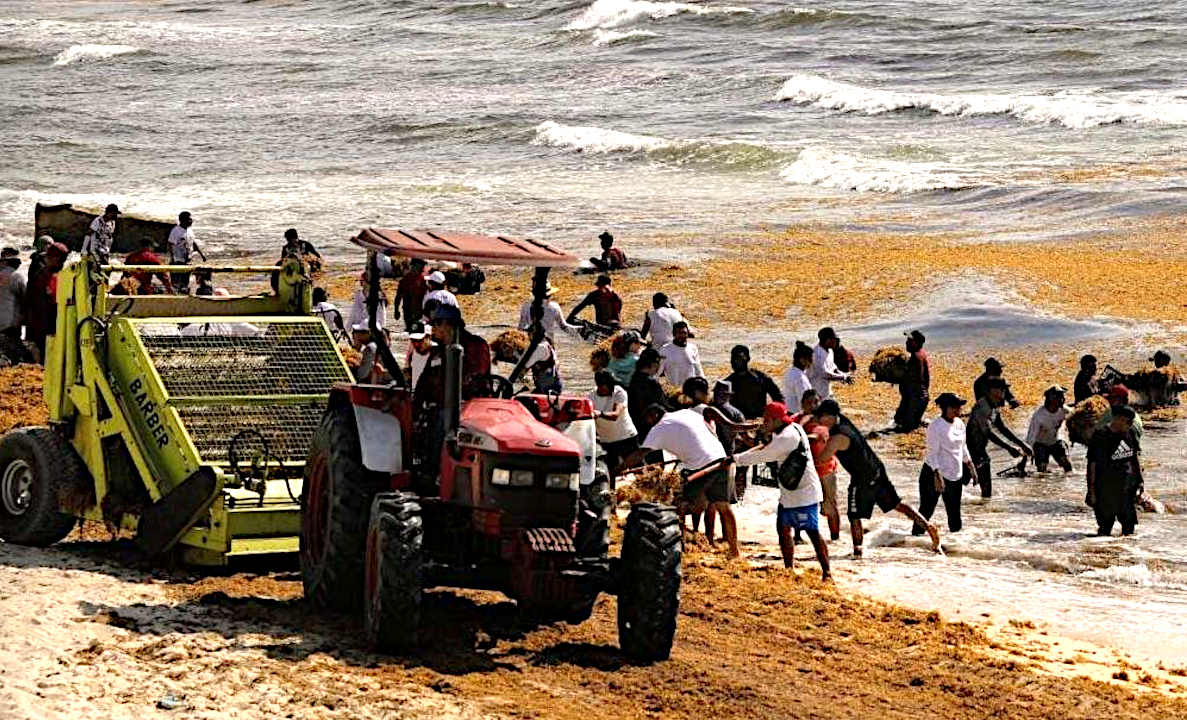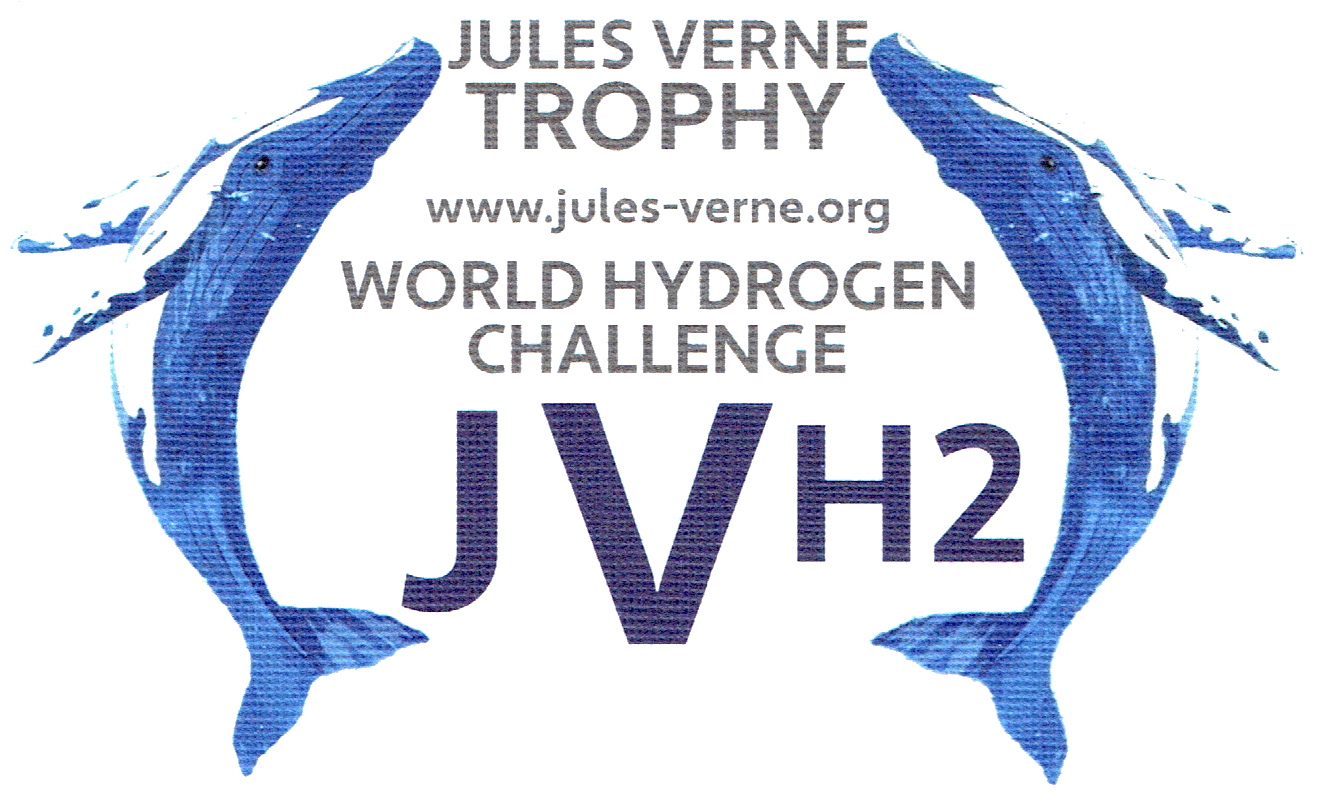Sargassum
has been at crisis levels for several years, but only recently have the Island
nations affected by what amounts to a plague, put that stamp on the problem.
Island Nations dependent on tourist dollars, to include the Gulf of Mexico
coastal towns and cities, have been hit with beaches of
decomposing sargassum, smelling of rotten eggs, attracting flies, causing ecological
mayhem and potential health hazards.
Hardly alluring for holiday makers, as they book their hotels in a formerly paradise
location. With an efficient method of harvesting the
floating seaweed, there is potential to turn a nuisance into opportunity via
the generation of fuels, heat and power using sargassum for biomass.
- Biomass: biomass can be used as fuel or for the generation of biofuels, etc. Though, such use may be cause for concern in terms of combustion gases and
global
warming in the long-term.
Biofuels are considered necessary to decarbonise parts of the economy with no alternatives, notably aviation where electrification is not yet available. Europe today meets 90% of its renewable transport target with land-based biofuels, which in many cases are at least as bad as fossil fuels. Meanwhile, climate science shows that fighting climate change will necessarily involve bioenergy, though the sustainable scale remains one of climate science’s most unsure areas.
Seaweed is highly SUITABLE for biofuel. Between 85 and 90% of seaweed is water, which means seaweed is very suitable for biofuel-making methods like anaerobic digestion to make biogas and fermentation to make ethanol. In addition, many seaweed species, like sugar kelp, have high carbohydrate and low lignin content that is perfect for making bioethanol.
Seaweed is one of the most EFFICIENT species, especially in absorbing nutrients like phosphorous and nitrogen. Because seaweed grows very fast, it can absorb a lot of
CO2, in fact up to 66 tonnes CO2 per hectare, which can help tackle
ocean
acidification. Fast growth also means CO2 emissions from for instance seaweed biofuel are quickly reabsorbed by new growth.
Seaweed is also highly PRODUCTIVE, growing about 26 tonnes dry weight per hectare,
compared to 2.3 tonnes soya and 5.1 tonnes corn.
Seaweed doesn’t need fresh water or fertilising,
but is more difficult to harvest than land grown crops.
Norway as an example: Salmon farming today covers an approximate 1000km2 of its total 819,620km2 Exclusive Economic Zone. The area within Norway’s baseline (grunnlinjen), the
most suitable for seaweed cultivation, covers 90,000km2 - an area as large as all the
agricultural land in Norway, Sweden, Finland and Denmark combined.
Assuming all nitrogen from farming salmon in Norway could be used for growing seaweed, Norway could deliver seaweed biomass for the production of 950 million litres ethanol per year (SINTEF, 2009 & Akvaplan Niva, 2016). This is about a quarter of the total fuel consumption of Norwegian road traffic. Delivering this would require less than 1% of the area within Norway’s baseline.
Since Sargassum landings represent a far-reaching threat to abounding coastal communities and environments, especially in Mexico, researchers have been focusing on effective ways to valorize this feedstock and revamp it into value-added compounds for varied industries. Among the numerous applications of Sargassum biomass that have been reported, special attention has been placed toward agricultural products, cosmeceuticals, pharmaceuticals, and clean energy (Amador-Castro et al., 2021). Of particular interest, biofuels obtained from pelagic Sargassum could represent a green energy alternative to the highly unsustainable and environmentally detrimental consumption of
fossil fuels (del Río et al., 2019; Savage et al., 2020).
Mexican companies such as Alquimar (2019) and Dakatso (2021) aim to valorize Sargassum into high-added value products. However, even though research is being conducted on the production of biofuels from Sargassum.
|
|
UNEP
- UNITED
NATIONS ENVIRONMENT PROGRAMME
While 2020 was relatively mild in terms of sargassum volumes, and a global pandemic
became the overarching worry, 2018 was record breaking in terms of sargassum
volumes reaching Caribbean shores and 2019 was also significant. Floating sargassum should not be construed as negative in and of itself – it is beneficial at sea, mainly as a unique pelagic habitat. However, the mass stranding of sargassum on coastlines has significant negative
impacts (biophysical and socio-economic), particularly on coastal communities and
livelihoods, public health, tourism and fisheries. This issue therefore represents an
emerging hazard for a region that is already subject to numerous hazards. Indeed,
various countries in the Caribbean have declared national states of emergency with
respect to sargassum influxes (Desrochers et al. 2020).
The issue is however not confined to the Caribbean
Sea, but it extends across the Tropical Atlantic, including equatorial Brazil as well as coastal West Africa from Sierra Leone through the Gulf of Guinea. Sargassum influxes are very much a multi-regional transboundary issue, demanding coordination and collaboration within and across impacted regions.
HEAVY MACHINERY
A secondary, avoidable negative impact of the influxes relates to the use of heavy machinery to remove massive Sargassum landings, which impacts beach habitats and tend to worsen the environmental harm. The use of heavy machinery causes compaction of beaches and kills organisms that live in the sand, such as ghost crabs and other sea creatures that keep a beach healthy by creating hundreds of holes that keep the beach ventilated. Driving with heavy equipment will not only crush them, but also kills any potential sea
turtle nests. Another impact is the removal of vast quantities of sand, resulting in unintentional sand mining, and ends up affecting the entire beach ecosystem.
SOCIO-ECONOMIC IMPACTS
Sargassum influxes negatively impact human well-being, activities, and livelihoods as well as major sectors of Caribbean Economies. Key sectors impacted include: coastal living and livelihoods, marine transport/ navigation, public health, fisheries and tourism. These impacts are inter-related, with many stemming from one of the key drivers of biophysical impacts – the decay of the sargassum biomass. The production of hydrogen sulphide negatively impacts
air quality, results in very unpleasant odours, and prolonged exposure is unhealthy, especially for persons with underlying respiratory conditions. This is detrimental for coastal residents and beach users, whether local or visitors.
Beach users who live elsewhere have the option to avoid impacted locations, while residents may be unable to avoid prolonged exposure. Large quantities of sargassum also spoil the aesthetic appeal of Caribbean beaches, and inhibit access to nearshore waters. Both issues affect residents, local beach users and tourists, while the latter particularly impacts those whose livelihoods rely on the sea, such as fishers who may need to access the water to access their equipment and/or livelihood.
DECLARATION OF EMERGENCY
When stranded in coastal areas, the sargassum itself dies, and many of the negative impacts originate with its decay. Given the scale and extent of the negative impacts these influx events may be characterized as a recurring hazard. The unprecedented scale of the Sargassum influxes also led to declaration of emergency conditions in several Caribbean countries e.g. Tobago in 2015, Barbados in 2018, and Mexico in 2019 (Chavez et al. 2020).
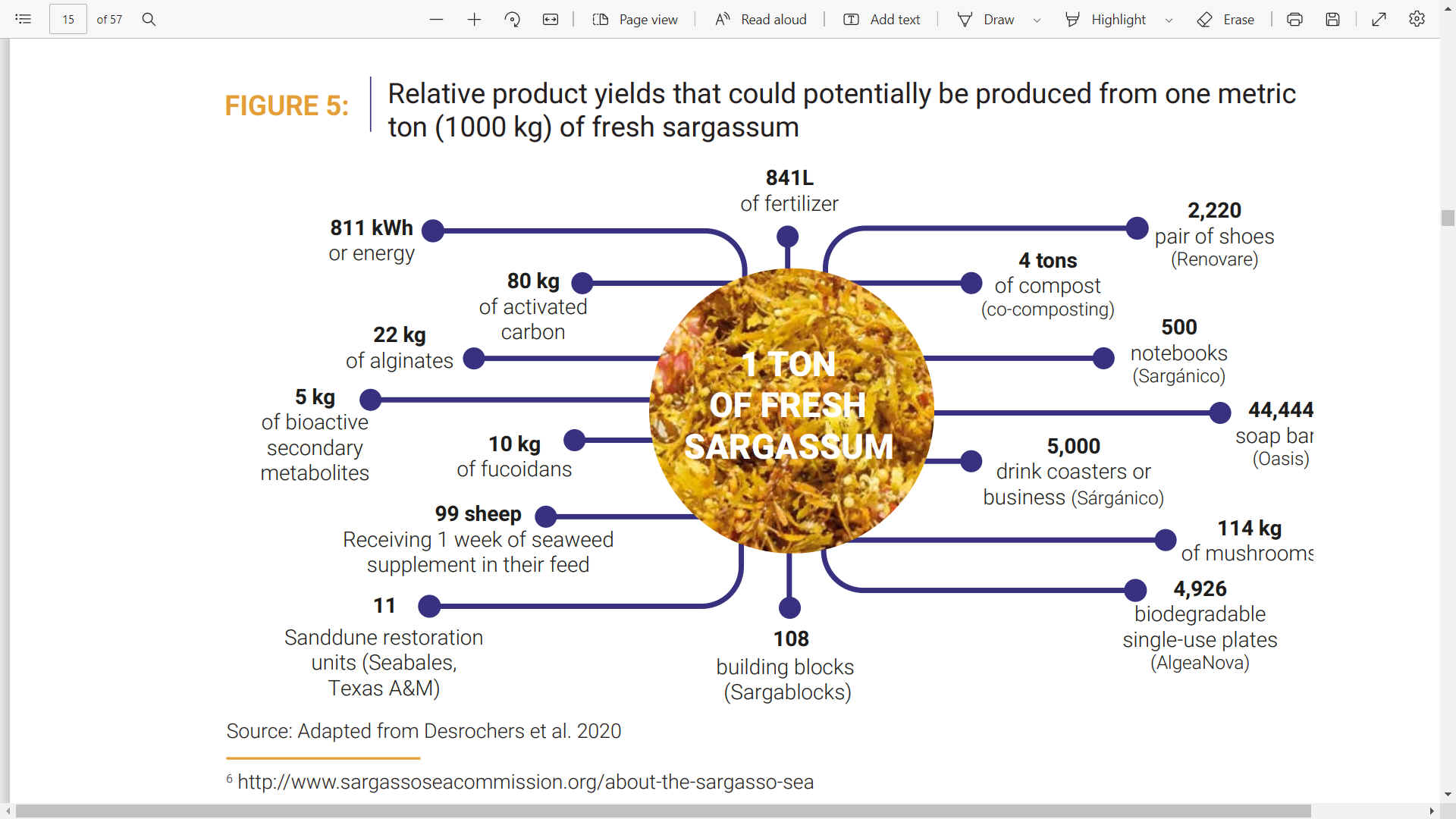
../../www.smartgrids-electricity-vehicles.com/Electricity.htm
|
|
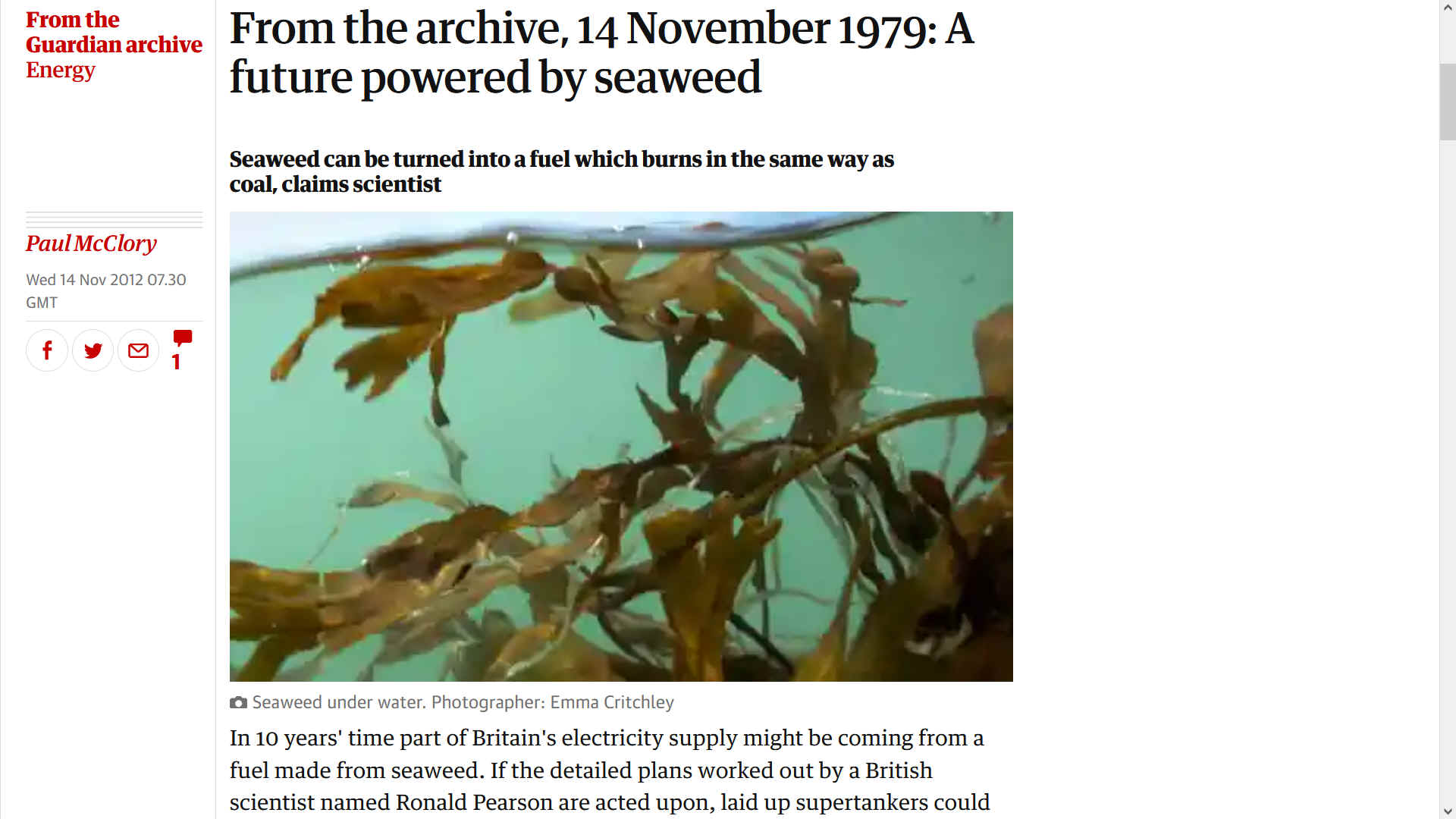
THE
GUARDIAN - ARCHIVE - NOVEMBER 1979 Seaweed can be turned into a fuel which burns in the same way as coal, claims
scientist
In 10 years' time part of Britain's electricity supply might be coming from a fuel made from seaweed. If the detailed plans worked out by a British scientist named Ronald Pearson are acted upon, laid up supertankers could soon be farming the ocean for "seaweed energy."
Mr Pearson, a lecturer in thermodynamics at Bath University, has developed what he calls an "aquatic biomass engine." With this he can dry seaweed and turn it into a fuel which power stations can burn in the same way as coal.
The world's largest area of naturally growing seaweed is in Sargasso
Sea, the legendary graveyard for ships in the North Atlantic. It is here that Mr Pearson proposes to farm.
He has calculated that a fleet of 150 ships of 250.000 tons dead weight would supply half of Britain's annual energy needs. Dried seaweed equivalent to one ton of
coal could be landed at a UK port for less than £7. This compares with present coal prices to the CEGB of £25 per ton and £56 per ton to the householder.
In addition to the energy benefits Britain would gain by implementing such a scheme it would also give a new lease of life to the depressed shipbuilding industry. To achieve a target of 150 ships would involve building 10 250,000 ton super transporters every year for 15 years.
This would increase Britain's merchant fleet by as much as 150 per cent.
All this sounds somewhat futuristic but it could be nearer than one might think. Recently Mr Pearson's Canadian associates were given a $250,000 contract from the Department of Energy and Mines. This was for the design of a biomass engine to harvest and dry thousands of tons of weeds that clog many Canadian waterways and lakes. Part of the dried weeds will be used to supply enough energy to power the barge to which the biomass engine is fixed.
Mr Pearson is now finishing the design for this engine and expects to be flying to Canada in early October with a working prototype to demonstrate to the Canadian Government. If it proves successful the market for such machines in North America could be huge. In the US it is estimated that more than $100 millions is spent annually in clearing congested waterways and lakes of weeds. As much as 75 per cent of this sum goes on transport costs. A Pearson biomass engine would eliminate any need to transport the weeds as they would be processed on a barge, running on fuel supplied by the weeds being harvested.
Although seaweed is not an obvious choice as a new source of energy, Mr Pearson is not alone in taking it seriously. At the US Naval Undersea Center in San Diego a project to grow a giant seaweed called kelp has been underway for the past 18 months.
Kelp, a prolific grower, increases by about 18 inches a day and can grow to more than 200 feet in only six months. Long used as a source of a valuable compound called alginate (used in ice-cream, soup and strawberry jam to provide the stiffness) kelp has only recently been considered as an energy source.
The "Ocean Farm Project," as the US Navy calls it, is being run in conjunction with Caltech and the American Gas Association. It involves growing the giant California kelp on nets covering a sea area of seven acres. US Navy scuba divers stick small seedlings to the polypropylene nets and the fully grown kelp is harvested by the divers six months later.
The harvested kelp then goes into an airless " digester " where microbes break it down into methane gas which is then burned in a generator to produce electricity.
Eventually, it is planned to increase the size of the Ocean Farm Project to an area of 470 square miles.
It has been calculated that the resulting harvest could supply the entire natural gas needs of the United States.
However, Ron Pearson is convinced that this is an expensive method and firmly believes that his own plans for farming areas like the Sargasso will yield the most fuel for the lowest cost. Recently he has advanced his ideas even further. He now believes that oil can be extracted from seaweed by the same process, and at no greater cost, as that used for extracting oil from coal.
Paul McClory is energy consultant to the Natural Energy centre.
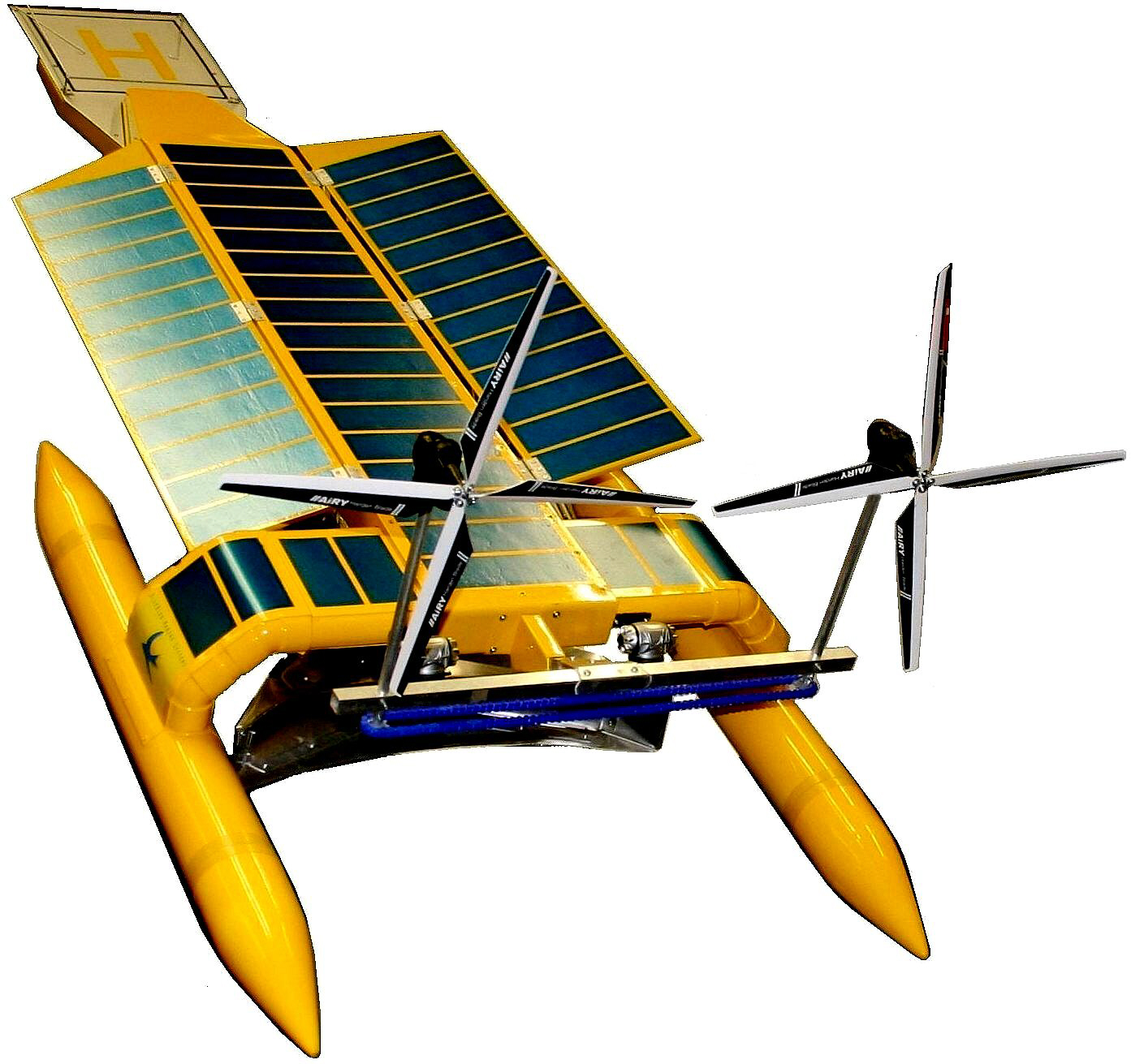
OCEAN
CLEANING DRONE - As seen above, SeaVax is not suitable for harvesting
sargassum in voluminous quantities. But the concept, or the equivalent, may be adapted
(or specially developed) for the
task. You'd still need autonomous fleet control, satellite comms and ocean
current geodata, solar assistance and a
capacious holding tank. But, the harvesting mechanics are different, as is
the pickup head and transfer arrangements. Also assuming 24 hour operations, and factory ships to
treat the recovered asset, for distribution across the globe. Then there is
carbon sequestration. But who would pay for that? Nobody in power - that's for
sure. It's all about the money for them- and they want a free lunch!
It would take a fleet of 300 specially adapted SeaVax
machines, operating at a speed of one load per hour, to deal with 22 million
tons of biological material. From our experience where we asked for funding to clean the ocean of plastic,
it will be a massive uphill struggle - with fruitless lobbying efforts - to
match the non-progress at Climate
Conferences (FLOPS). It will take a working lifetime, unless, the problem
becomes so great, that government react as if they were at war. And it is a
war. Make no mistake. It's a struggle for the survival of our great grand
children. We cannot stop our children suffering, because of corruption and
irresponsible fossil fuel companies. We are too late for that, but with more
Great Thunberg's, we might save the human race.
The sparkle on
the newly brown tinged horizon is that sargassum can be a cash crop. Even so, the
sums being bandied about don't come close to managing this crisis. What they
need is a miracle, dealing with the root cause, which is warming
of the oceans from climate
change. Sadly, the cure for rising
sea temperates is a million miles away, with present G20
policy stagnation - that stinks - like the hydrogen sulfide from rotting
seaweed.
CARIBBEAN
ISLANDS BY POPULATION
1 Cuba 11,252,999
2 Haiti 11,263,077
(Hispaniola)
3 Dominican
Republic 10,766,998 (Hispaniola)
4 Puerto
Rico (US) 3,508,000
5 Jamaica 2,729,000
6 Trinidad
and Tobago 1,357,000
7 Guadeloupe (France)
405,000
8 Martinique (France)
383,000
9 Bahamas 379,000
10 Barbados 283,000
11 Saint
Lucia 172,000
12 Curaçao (Netherlands)
157,000
13 Aruba (Netherlands)
110,000
14 Saint
Vincent and the Grenadines 110,000
15 United
States Virgin Islands 105,000
16 Grenada 104,000
17 Antigua
and Barbuda 89,000
18 Dominica 71,000
19 Cayman
Islands (UK) 59,000
20 Saint
Kitts and Nevis 46,000
21 Sint
Maarten (Netherlands) 39,000
22 Turks
and Caicos Islands (UK) 37,000
23 Saint
Martin (France) 36,000
24 British
Virgin Islands (UK) 31,000
25 Caribbean
Netherlands 26,000
26 Anguilla (UK)
14,000
27 Saint
Barthélemy (France) 10,000
28 Montserrat (UK)
5,000
29 Tortuga 25,936
30 Roatán 110,000
Governments
might revise their policies, to most urgently curb global
warming, hence ocean temperature rises that are causing the sargassum
crisis. The is the root cause of the problem. Cleaning up the excess from the
oceans and seas, is retrospective handling. That, unfortunately, it seems we
will be lumbered with for at least 50 years hence.
LINKS
https://www.theguardian.com/theguardian/2012/nov/14/seaweed-energy-fuel-alternative-1979
https://bellona.org/assets/sites/3/2017/03/FACTSHEET-seaweed-for-energy.pdf
https://www.frontiersin.org/articles/10.3389/fmars.2021.791054/full
|
